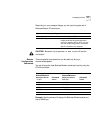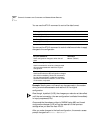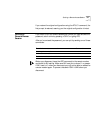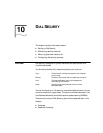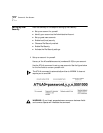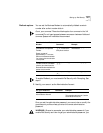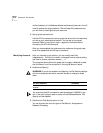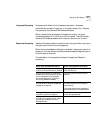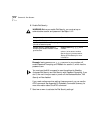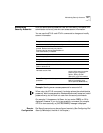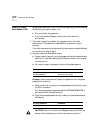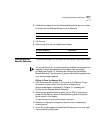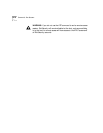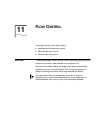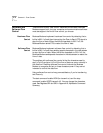
Setting up Dial Security
10-5
Autopass Prompting
Autopass is the default form of password protection. Autopass
automates the process of logging in to the host modem, but it requires
the guest and host devices to be Business Modems.
When a guest device attempts an Autopass connection, the guest
includes its password in its V.42 error-control request. The host modem
checks all the enabled passwords in its security accounts for a match.
Password Prompting
Password Prompting allows connections with
any
guest device, as long as
the guest user knows the correct password.
When the host has Password Prompting enabled, it asks guest users for a
password. The host modem checks the received password against each of
its active Security accounts.
The table below is a comparison between Autopass and Password
prompting.
When using Autopass Prompting When using Password Prompting
Both the host and guest devices are made
by 3Com and have Dial Security enabled.
Guest devices don’t have to support
3Com Dial Security.
The connection between the Business
Modems or modems is under V.42 error
control (See Appendix B, Alphabetic
Command Summary for information
about using
AT&M4
or
AT&M5
)
V.42 error-control connections aren’t
required
If the guest includes an invalid password,
the host sends an INVALID PASSWORD
message and hangs up.
If the guest sends an invalid password,
the host prompts twice more before
disconnecting.
If the guest does not send a password
after 60 seconds, the host disconnects.
If the guest includes a valid password, the
host permits a secure connection.
The host will still always respond to a
correct Autopass attempt.
If the guest did not enable Dial Security,
the host will not accept the call unless
prompting is enabled on the host
Business Modem.



